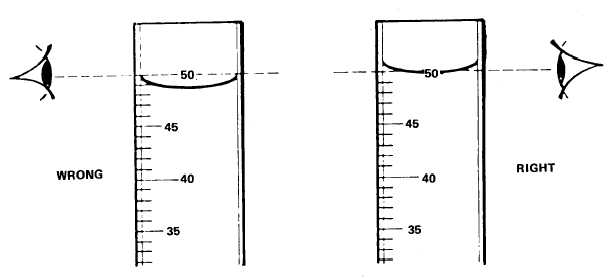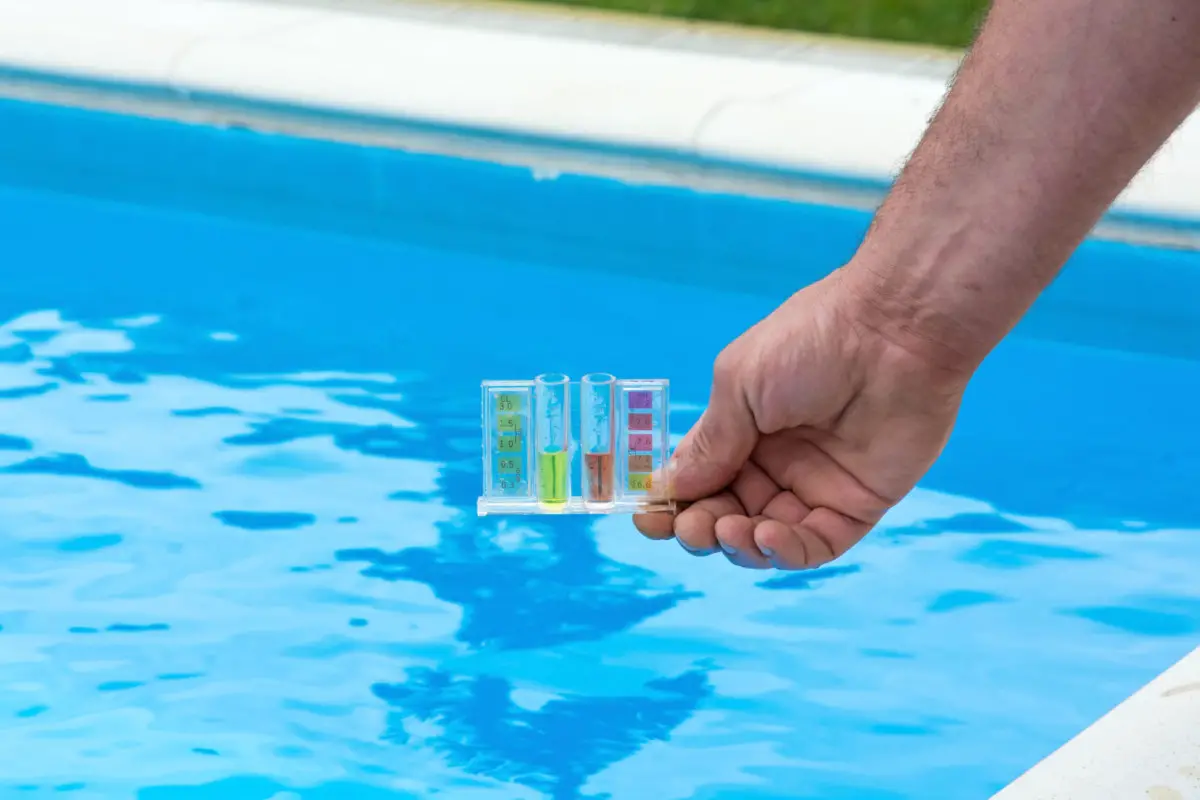Pool owners learn fast that regular maintenance and testing are vital to maintaining a clean balanced swimming pool. By knowing the condition of your pool’s water, you can keep it safe, healthy, and sanitized at all times. There are a few ways to test your pool’s water like Test Strips that are easy to use and Drop Reagent Test Kits that use color comparison for test results. What are the differences between testing pool water with Pool Test Strips vs. drops?
- Strips give quick results-drops take longer
- Strips are easy- use comparison
- Drops use precise measurement & mixing
- Strips cost less
- Strips accuracy varies-Drops are more precise.
- Strips have a longer shelf life.
- Drops have a bigger Environmental impact-Strips have less waste.
- Drops can test wider parameters
When it comes to pool water testing, accuracy is essential. If you don’t get accurate readings of your water chemistry then balancing it will be almost impossible. Using either of these Test Kits will work but there are some differences between the two.
Pool Test Strips
Pool test strips are convenient tools for quickly assessing the chemical balance of pool water. They typically measure parameters such as pH, chlorine, alkalinity, and sometimes cyanuric acid. To use them, simply dip a strip into the water for a few seconds, then compare the color changes to a provided chart. While test strips offer quick results, they may be less precise than other testing methods. Regular use of pool test strips helps ensure proper water chemistry, contributing to a clean and safe swimming environment.
Swimming Pool Test Strips
To use the test strips, dip them into your pool water and remove them immediately. Hold the test strip level for about 15 seconds, and then the colors should appear for each chemical ppm. You can then compare the colors with the included chart on the bottle of the strips. Generally, darker colors will mean a higher presence and lighter will mean a lesser presence of the chemical.
Some Pool owners believe test strips are more accurate but the accuracy depends on a few factors. This is because using liquid reagents takes a little more skill when adding the reagents and mixing them properly. Test Strips are fast and can give numerous results at one time. Using Drop Reagents takes some more time and preparation between each test.
Test strips have a shelf life and expire after one to two years depending on the brand. Old test reagents and strips can give inaccurate results if you use them for testing the water, so these should be replaced before they hit their expiration date. I change them every season when I open the pool to ensure accuracy in testing.
- Submerge the strip 6″ underwater for two (2) seconds, and remove with the pads facing up.
- Shake ONCE to remove excess water.
- Place the test strip up to the color legend and read immediately in this order: Cl > Alk > pH > CH.
- Add the appropriate chemicals indicated
Test Strips can only be used once any pool water from your hands or fingers can alter the accuracy of the test. Do not touch the strips because oil from your fingers can also alter the test. Normally having used them over the years Pool Test Strips get wet and don’t last as long as the reagents from a Pool Test Kit. Keep the Test Strips in a cool dry environment out of the sun and weather and they will last longer.
Test Strips Pros:
- Fastest water test
- Simple to use and read, especially for the small pool owner
- Least expensive to purchase
- A most popular option for above-ground novice pool owners wanting a quick, daily pool chemistry analysis
Test Strip Cons:
- Fewer options for testing capabilities
- Not as accurate or precise as a liquid test kit
- Some results take just a few seconds to develop, but for tests with multiple results on the same strip, it’s important to understand the timing so you don’t get inaccurate results
- Hands must be completely dry when removing and dealing with the strips from the container
Liquid Drop Pool Test
Liquid drop pool tests involve carefully measuring and adding liquid reagents to a water sample to determine its chemical balance. These tests typically measure parameters such as pH, chlorine, bromine, alkalinity, and calcium hardness.
To perform a liquid drop test, users follow detailed instructions to mix the reagents with the water sample and observe color changes to determine the concentration of each parameter. While liquid drop tests offer greater precision and accuracy compared to test strips, they may require more time and effort. Regular use of liquid drop tests helps maintain optimal water chemistry in swimming pools, ensuring a safe and enjoyable swimming experience.
Swimming Pool Test Kit
If you have a bigger Inground swimming pool and want to put some extra time into it then the best way is to test your pool often. Most in-ground Pool owners when Testing Pool Water trust the Dop Method Test kit against a Test Strip for accurate pool water tests.
Using a Drop method with reliable reagents is the best way to go for controlling pool tests like chlorine, pH, acid and base, alkalinity, calcium hardness, and cyanuric acid. There is more work involved with using a Drop Reagent Test Kit but it can ensure more reliability of your pool test results.
Saltwater drop test kit tests how much salt (sodium) is created by your chlorine generators which are included with new kits. These Test Kits come in a protective case that will keep sunlight from destroying reagents. Pool testing reagents should never come in contact with your fingers as with Test Strips. You have to rinse the Test Cell or Testing Block before each and every test. The Drop Method for pool testing demands more attention to detail but provides a more definitive test result.
Again just as in the Test Strips Do not touch the sample with your fingers or mix the comparator or Block Tester with your thumb or fingers because this will alter the test, especially in a pH test. To ensure a consistent reagent drop size, hold the dropper bottle straight up and down not at an angle.
Pros of using a Liquid Drop Reagent Kit:
- Most accurate type of water test. Liquid DPD pool reagents are the best for testing chlorine levels in your pool
- Testing available for more diverse aspects of water chemistry
- This pool testing method is used by pool professionals and health departments
Cons:
- The most expensive water test
- The testing process can take longer and be more complicated than test strips
- Reagent bottles must be held vertically to ensure uniform drop size, and drops must be counted as they’re slowly added
- More prone to user error
A great Testing Kit with the added test for Salt content is a Taylor 2000 Service Complete Test & Salt Water Drop Swimming Pool Spa Test Kits or a kit that combines a Drop Reagents but with a digital readout instead of a Comaparetor or Testing Block which can make the testing easier and more reliable not being used under the glare and sunlight near the pool called LaMotte, ColorQ Pro 7 Digital Pool Water Test Kit. (Multicolor)
Pool Water Test
The DPD (N, N-diethyl-p-phenylenediamine) test is a widely used method for measuring free chlorine and total chlorine levels in water. It involves adding DPD reagents to a water sample, which reacts with chlorine to produce a color change. By comparing the resulting color to a standardized chart, users can determine the chlorine concentration in the water.
This test is commonly used in swimming pools, spas, and water treatment facilities to monitor chlorine levels and ensure proper disinfection. The DPD test is known for its accuracy and reliability in measuring chlorine levels, making it a valuable tool for water quality management.

You can have the most expensive Pool H2O Test Kit on the market, but If you don’t know the size and volume of your pool and don’t perform the directions properly which includes sampling the water test, it just won’t matter. Here is a good Pool Volume Calculator to use for any size or dimension that you may have.
The DPD test will give more accuracy and allow you to provide accurate readings of your pool’s chemistry. The liquid testing just takes a little more testing practice on the water sample. Pool tests like Total Chlorine are color comparative.
The pool test reagent goes Bad! So you need to replace them every season. Store them with other pool chemicals in a cool dry place out of the rain and sun.
Take consistent samples from the pool’s center down to your elbow 12-18″ deep. Don’t ever touch the water sample or the pads on the Test Strip. Remove an excess sample to the correct water line mark on the Comparator or Test Cell.
See the Meniscus Curve on the right there is a big difference in the right and wrong amount in the Test Cell. Follow directions for any kind of Test Kit you use. Watch the video on running a test with a Drop Reagent Pool Test Kit and the Test Strip
Conclusion
In conclusion, both pool test strips and liquid drops offer effective methods for testing pool water. Test strips are quick and easy to use, while liquid drops provide precision and flexibility. The choice between the two depends on factors such as convenience, accuracy, and cost, ensuring pool owners can maintain optimal water quality for a safe and enjoyable swimming experience.
References:
MyWaterEarth&Sky- How to Test Pool Water
FAQ’s
- What is the DPD test? The DPD (N,N-diethyl-p-phenylenediamine) test is a method used to measure chlorine levels in water.
- How does the DPD test work? The test involves adding DPD reagents to a water sample containing chlorine. The reagents react with chlorine to produce a color change, which is then compared to a standardized chart to determine the chlorine concentration.
- What does the DPD test measure? The DPD test measures both free chlorine and total chlorine levels in water.
- Why is the DPD test important? Monitoring chlorine levels is crucial for ensuring proper disinfection in swimming pools, spas, and water treatment facilities. The DPD test provides accurate and reliable results, helping to maintain safe and clean water.
- How often should I perform the DPD test? The frequency of testing depends on factors such as pool usage, temperature, and weather conditions. It’s generally recommended to test chlorine levels at least once or twice a week in swimming pools.


